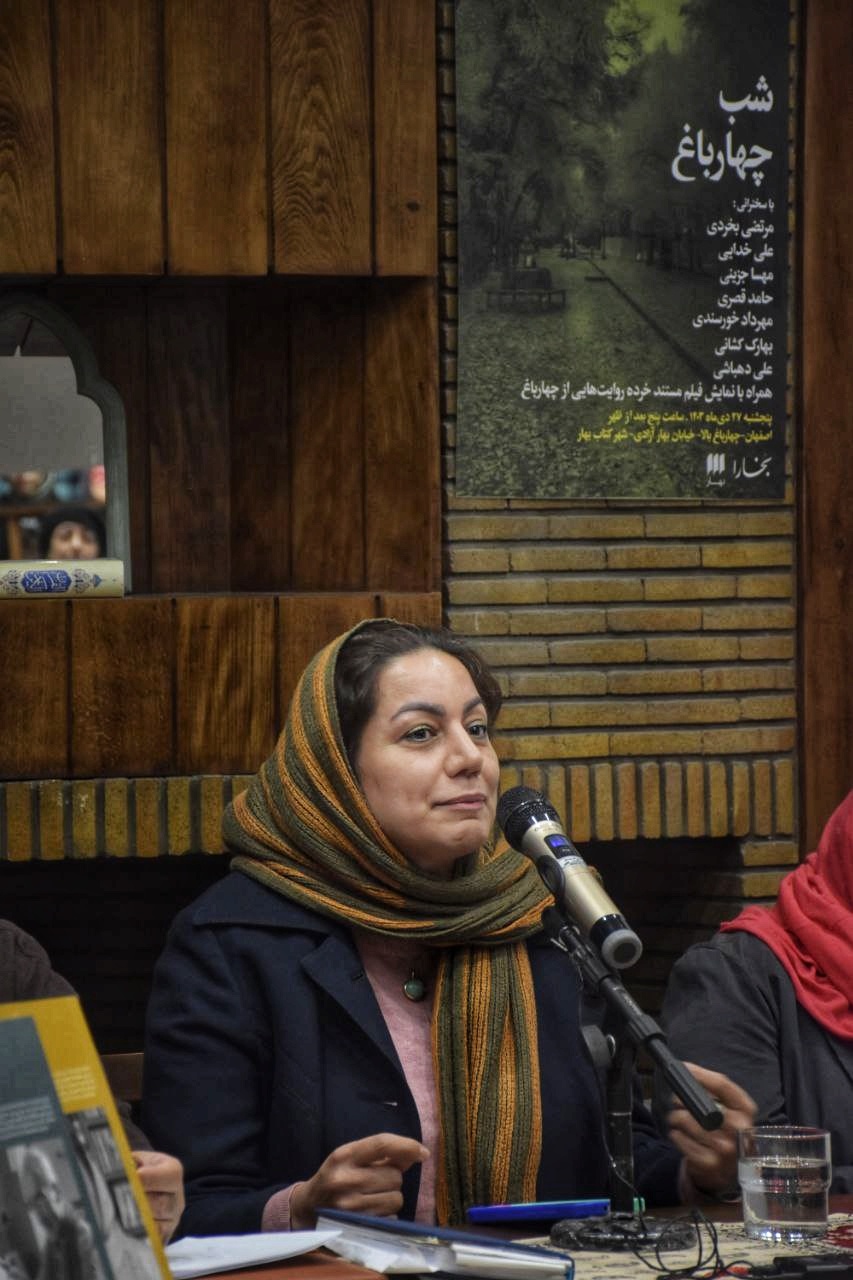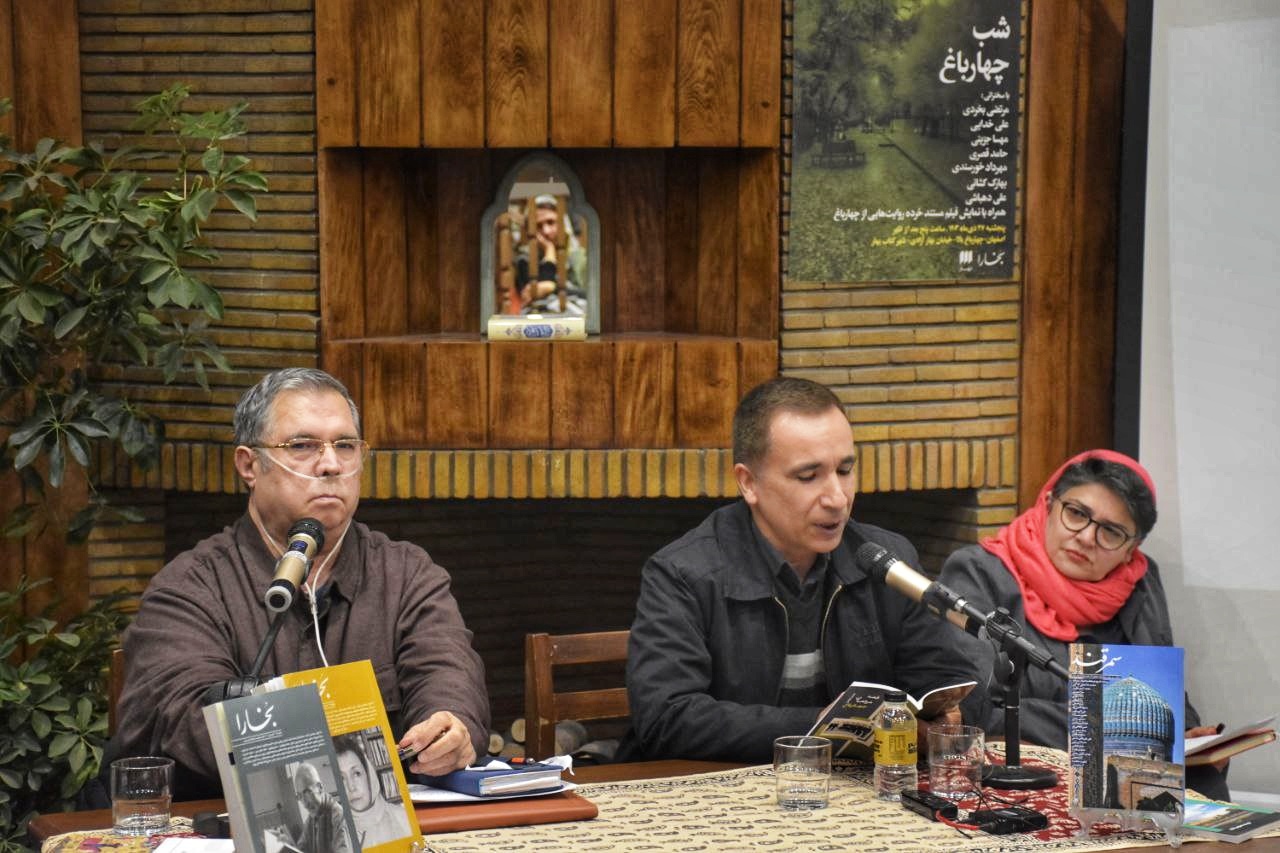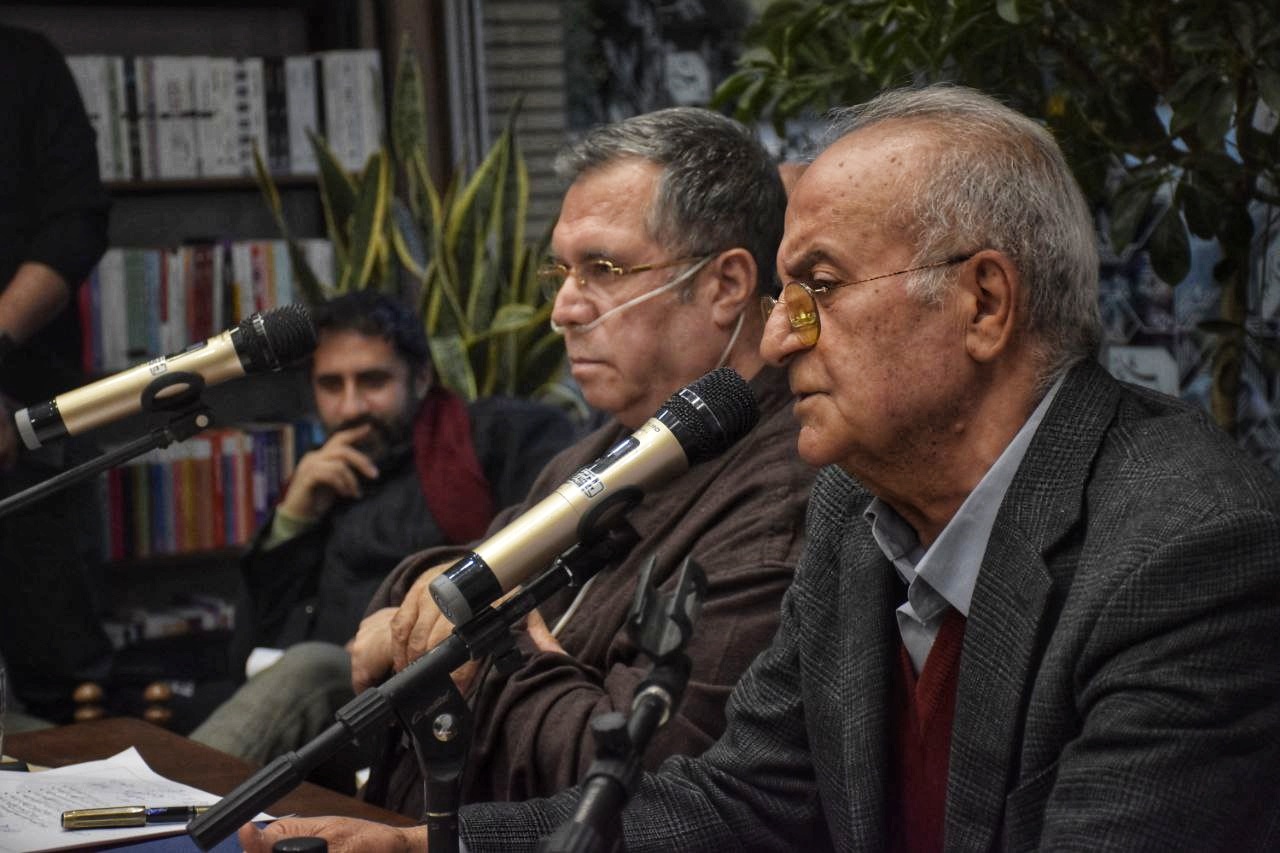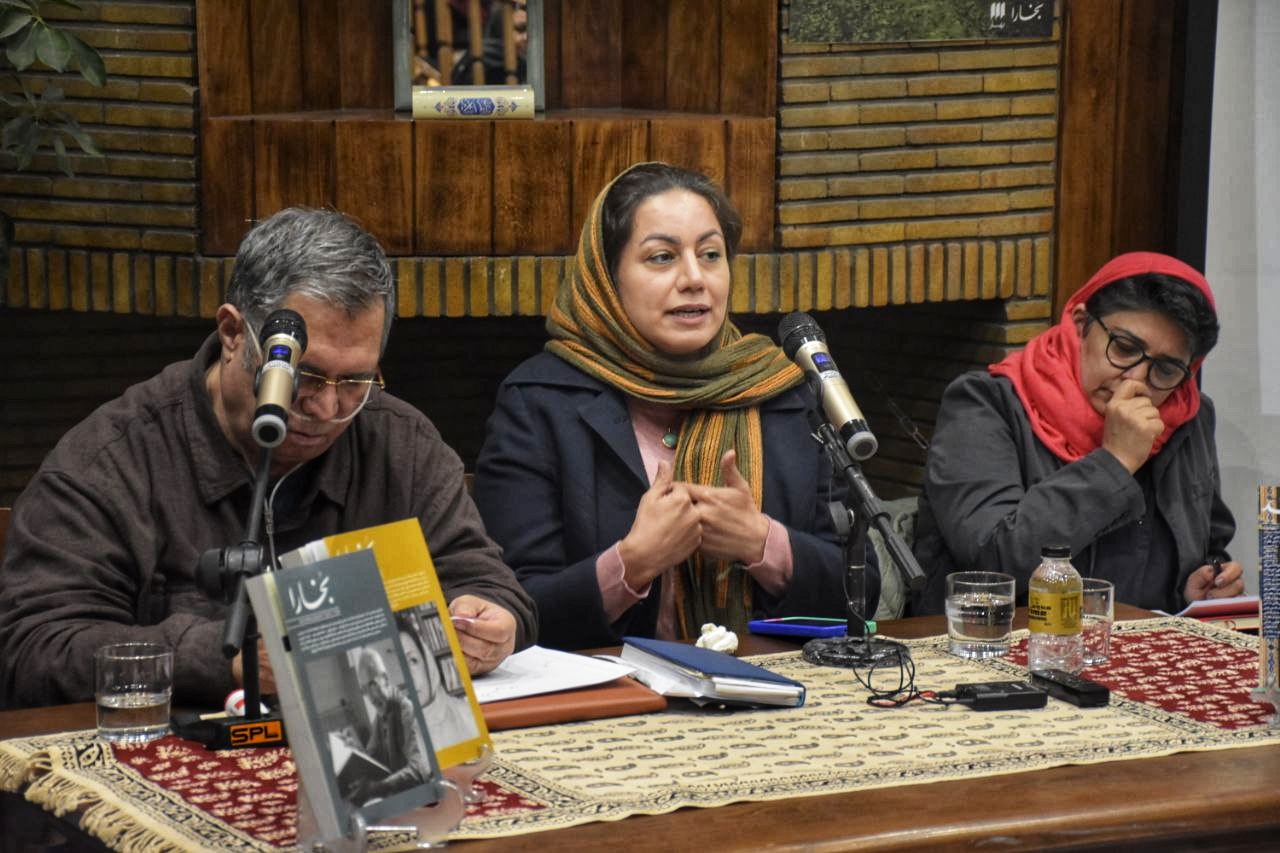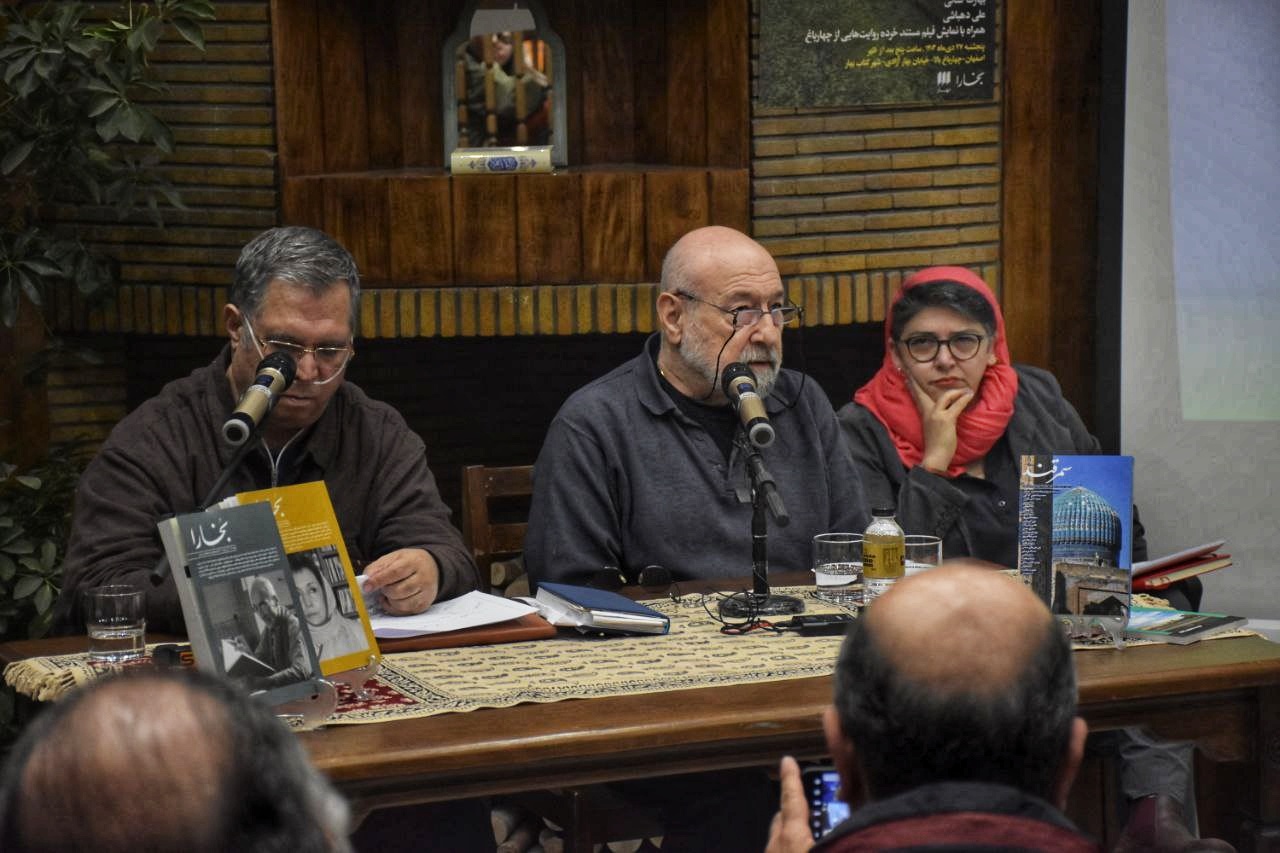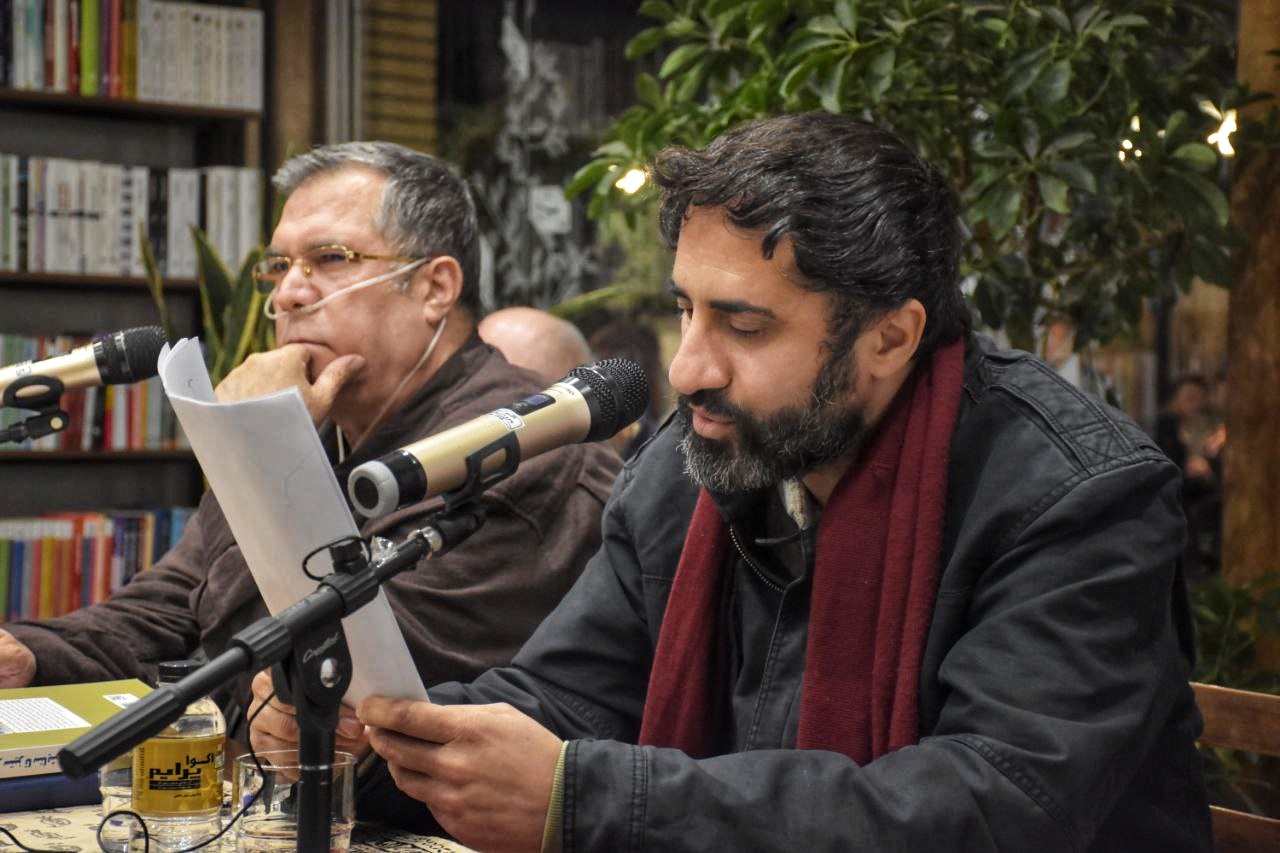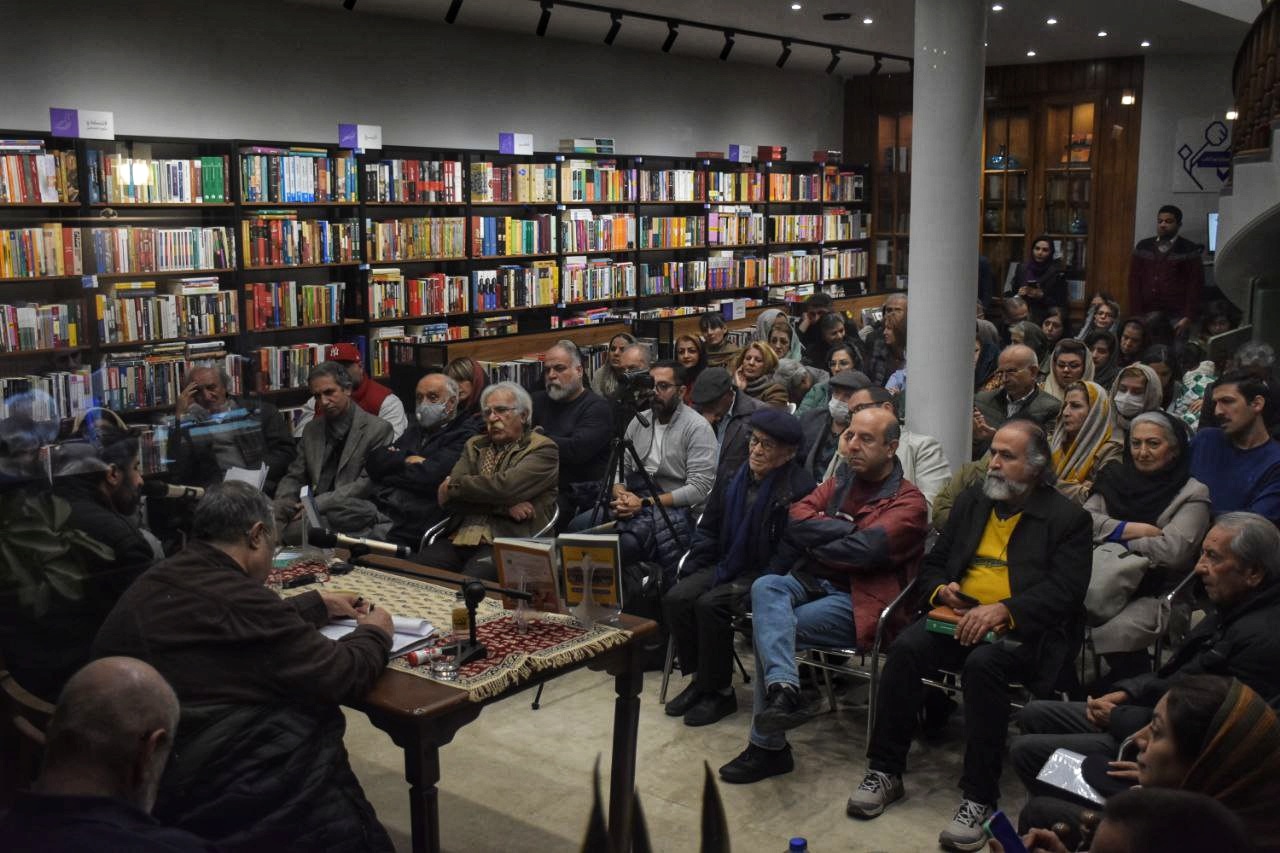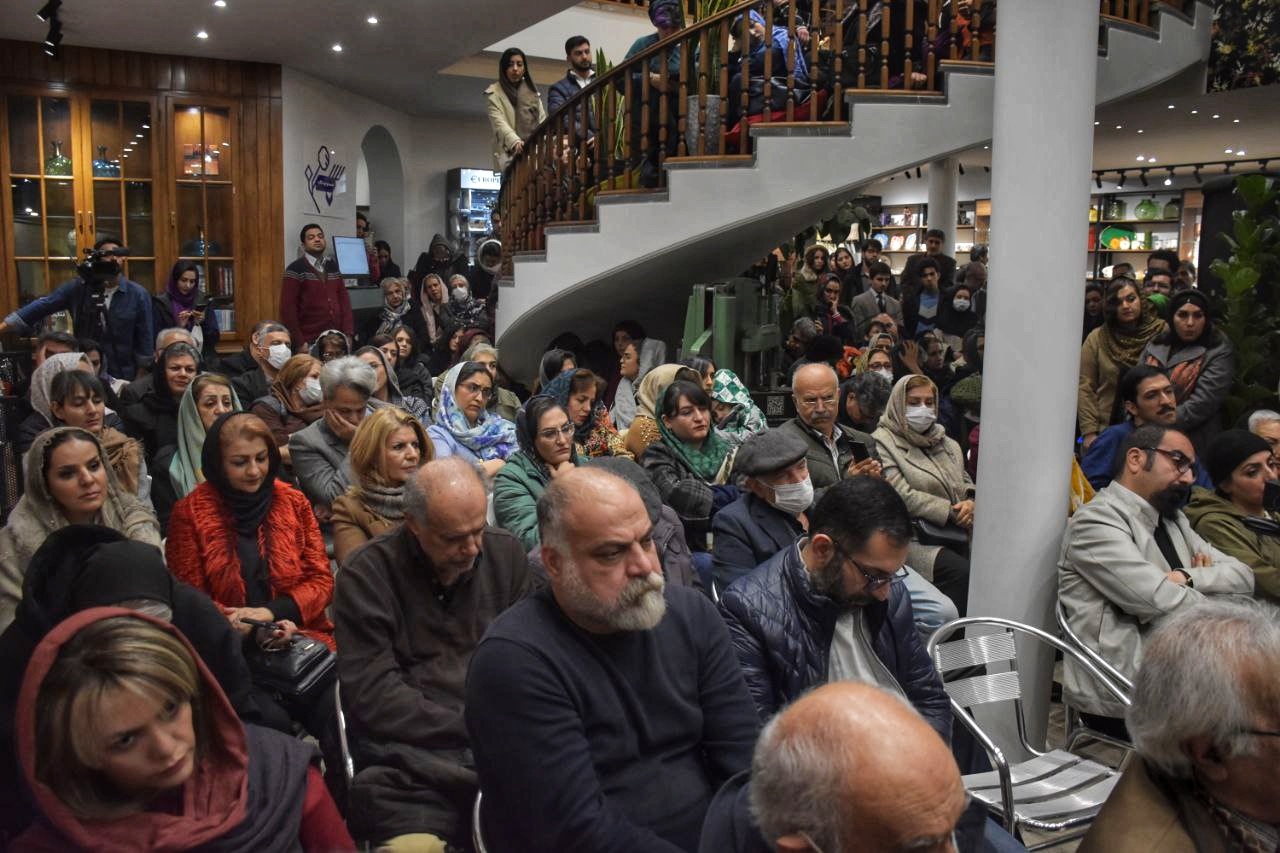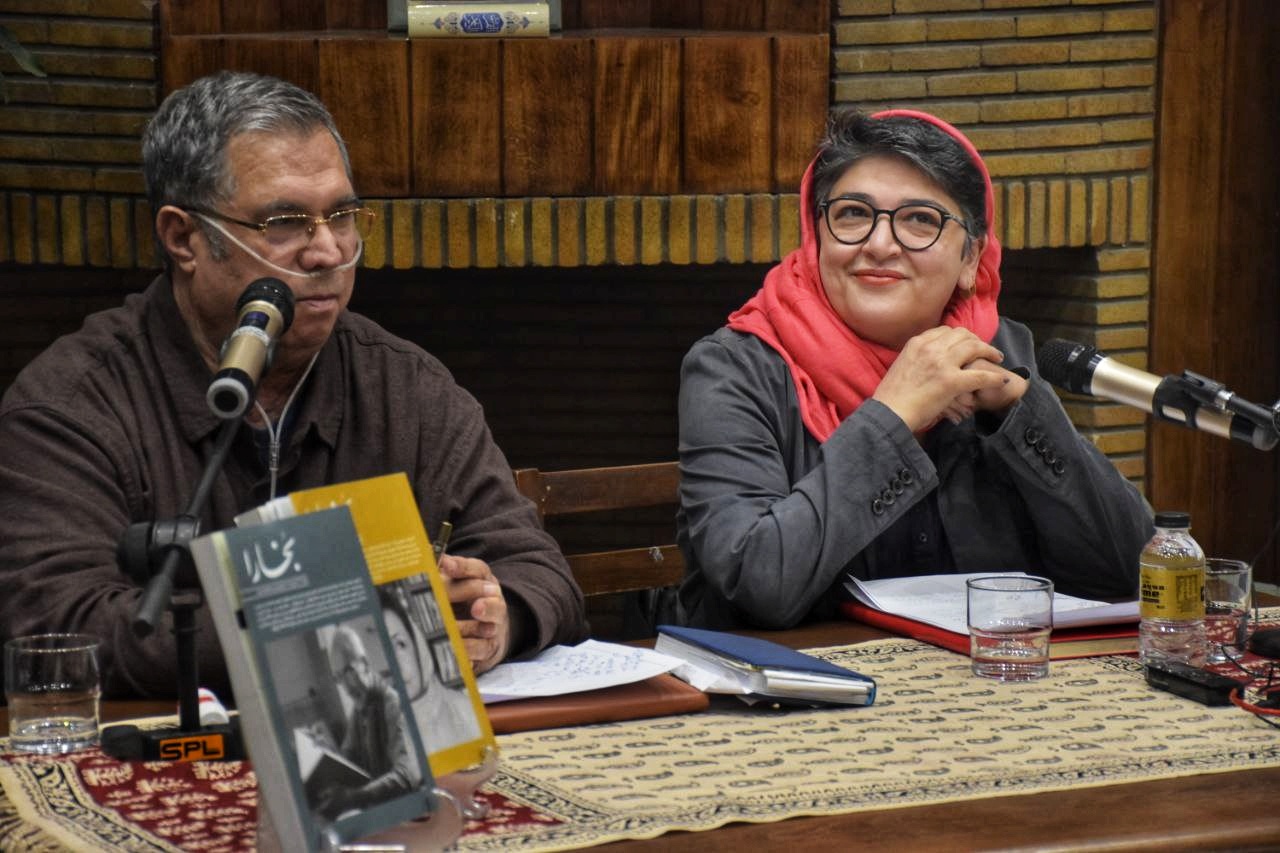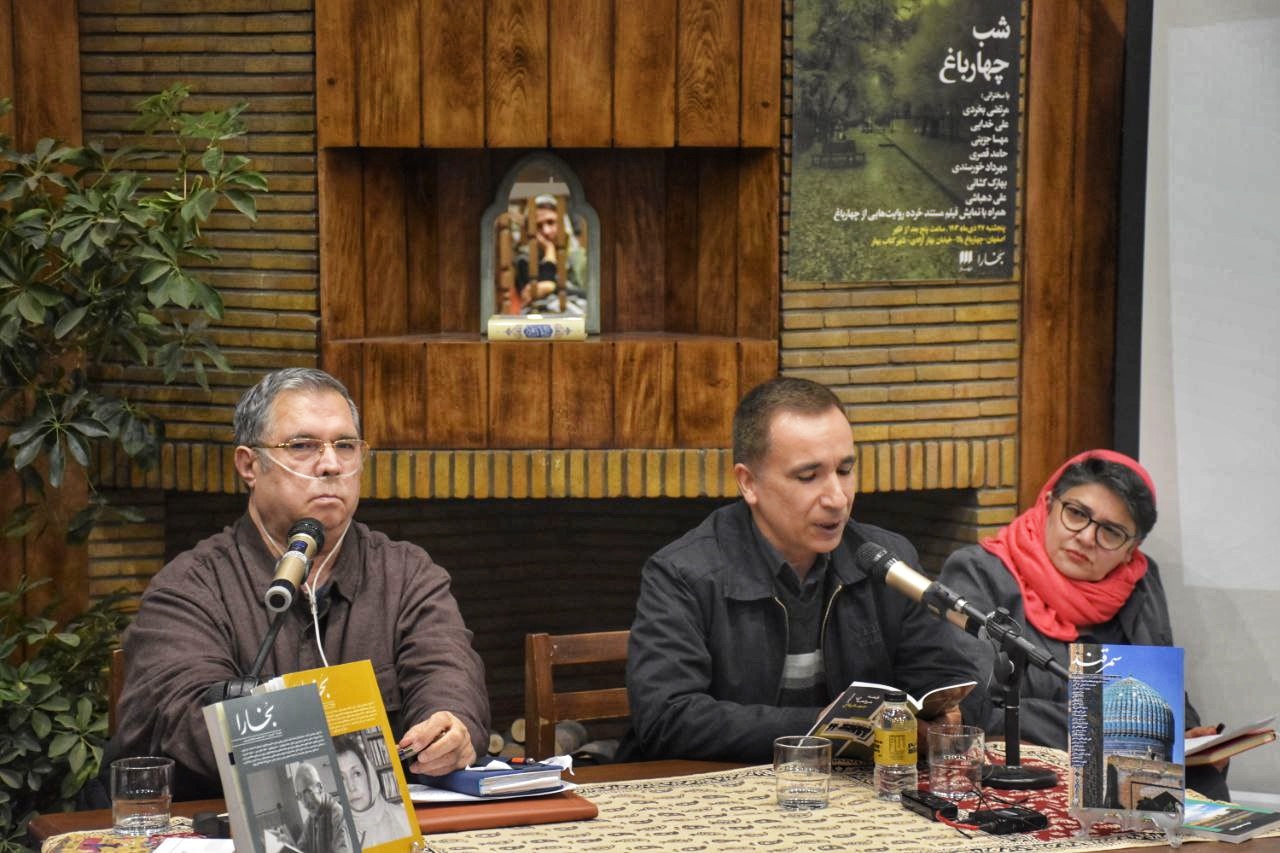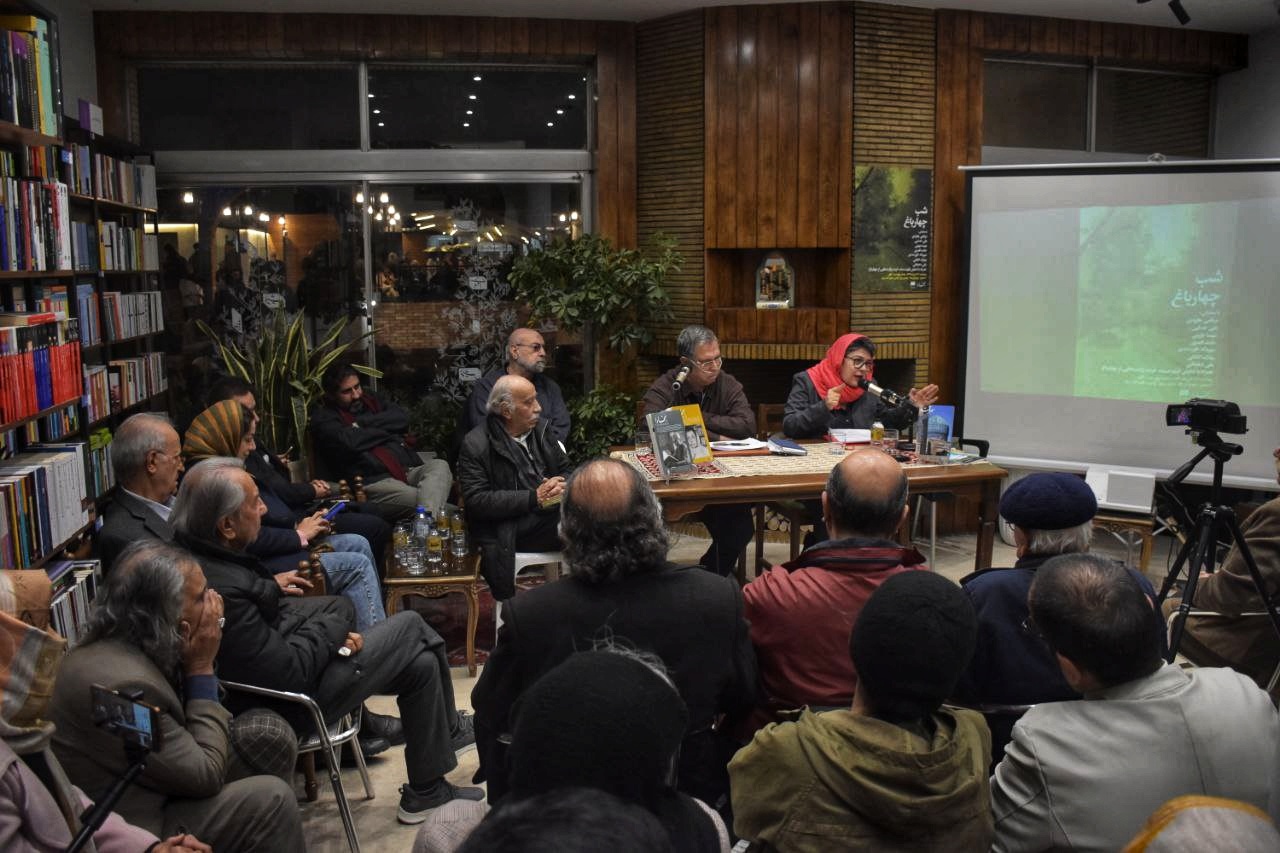
On January 16, 2024 (Dey 27th, 1403 in the Persian calendar), Bahar BookCity of Isfahan, a beloved branch of the renowned Iranian cultural institution BookCity, played host to the 805th event in the “Nights of Bukhara” series. This particular evening focused on Isfahan’s iconic Chaharbagh Abbasi avenue, a poignant reflection on its memories and a celebration of the enduring values embedded within this historical artery of the city. Architects, writers, and researchers gathered for this cultural event, sharing narratives of Chaharbagh’s past and present, and posing a vital question to the audience: What has become of Chaharbagh, this symbolic heart of Isfahan’s religious, cultural, and social life?
“Chaharbagh Night in Isfahan” was an initiative of Bahar BookCity of Isfahan, organized in collaboration with Ali Dehbashi as part of the ongoing “Nights of Bukhara” events. This program offered a comprehensive look at the history, culture, and social heritage of Chaharbagh Abbasi. This avenue, once a vibrant symbol of Isfahan’s dynamic spirit and the rhythm of its people’s lives, now faces numerous contemporary challenges.
During the evening, Mortaza Bakhradi, a distinguished architect from Isfahan, shared nostalgic memories of his childhood and youth spent on Chaharbagh. He expressed regret that parts of this street have lost their former cultural identity, lamenting the diminished presence of the once-thriving coffee houses, cultural meeting spots, cinemas, and unique confectioneries that characterized its golden era. Bakhradi emphasized, “Chaharbagh has always held a special place in the hearts of Isfahan’s people, and it deserves to have its authenticity preserved in the course of development.”
Ali Khodaei, author of “The People of Chaharbagh,” continued the program by drawing upon travelogues from writers like Dieulafoy and Jamalzadeh, offering a fresh perspective on the street’s culture and age-old traditions. He elaborated, “In my time, Chaharbagh was a place brimming with extraordinary individuals. Simply going to this street was a ritual in itself; even the way one dressed played a role in being present in Chaharbagh.” He also recalled the flourishing cinemas, secretarial schools, and the diverse array of sweets available, considering the avenue a symbol of social and cultural dynamism in Isfahan.
Further enriching the discussion, Mehrdad Khorsandi, author of “The Tale of the People of Chaharbagh,” focused on the history of water supply in the area. He highlighted that Iran’s first water organization was established in Isfahan, and the initial water distribution point was precisely on this avenue. He remarked, “Everyone can write their own story of Chaharbagh,” underscoring the multitude of narratives and memories woven around this street.
Subsequently, the documentary “Short Narratives of Chaharbagh” was screened. By portraying the history and untold stories of the avenue, it revealed how Chaharbagh functioned as more than just a thoroughfare, serving as a vital hub for cultural and social interactions. This resonates deeply with the goals of cultural centers like BookCity, which emphasize “strengthening and disseminating national culture and promoting cultural elevation.”
In closing, Ali Dehbashi, the organizer of “Nights of Bukhara,” stressed the necessity of recording and rewriting the story of Chaharbagh. He stated, “What is visible of Chaharbagh today is perhaps only a shell of its glorious past. It is our duty to keep the narrative of this axis alive.” He noted that these cultural gatherings align with the approach championed by the BookCity cultural center: creating a forum for intellectual exchange among cultural figures and striving to disseminate and revitalize historical and social heritage.
The speakers of the evening collectively emphasized that Chaharbagh, and similar places across the country, hold significant values of culture and community life beyond their touristic appeal. From coffee houses that served as platforms for dialogue and Shahnameh recitation to cinemas and confectioneries, each offered a glimpse into the cultural and social offerings of their time.
The concluding question of the event was: How can these cultural values be preserved while simultaneously advancing urban growth and development? Approaches such as holding specialized gatherings, documenting memories, and defining restoration and cultural projects were suggested as actions that could aid in reviving the original role of Chaharbagh.
“Chaharbagh Night in Isfahan,” by looking at the almost forgotten past and redefining the current place of this avenue, demonstrated that the need to pay attention to the cultural identity and social authenticity of Chaharbagh remains a vital matter. This avenue, although altered in the hustle of time, remains in the collective unconscious of Isfahan citizens and lovers of Iranian history as a symbol of a brilliant era of social and cultural life.
